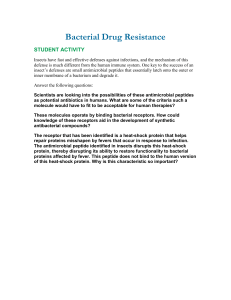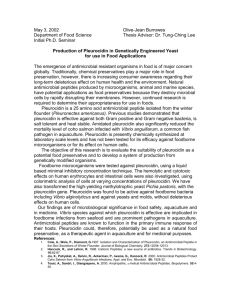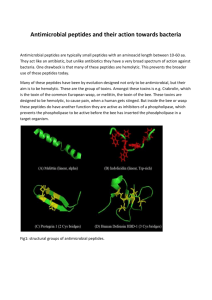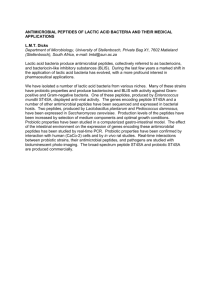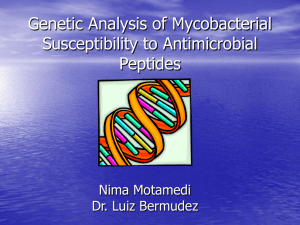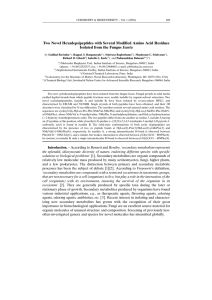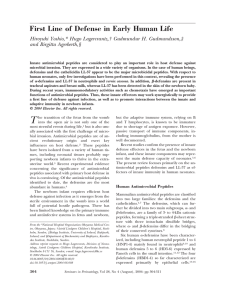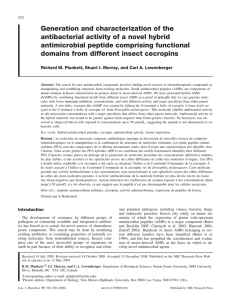Under the Radar Screen: How Bugs Trick Our Immune Defenses
advertisement
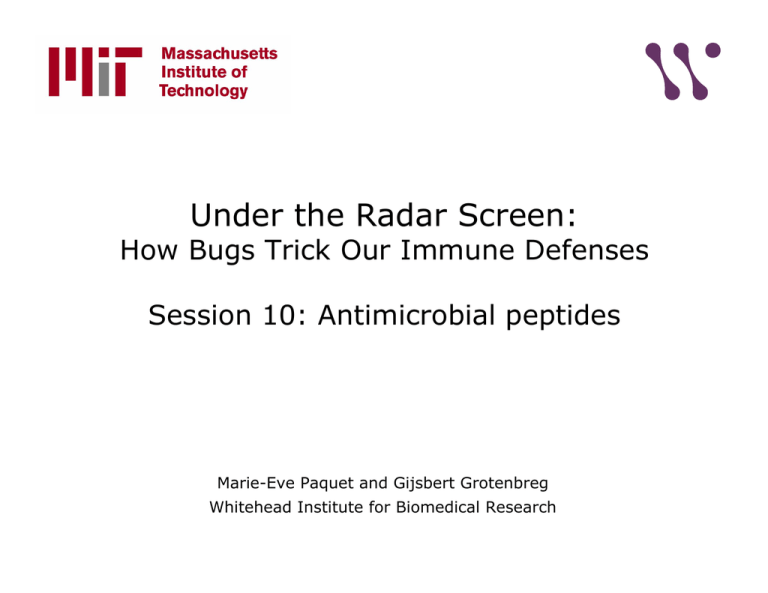
Under the Radar Screen: How Bugs Trick Our Immune Defenses Session 10: Antimicrobial peptides Marie-Eve Paquet and Gijsbert Grotenbreg Whitehead Institute for Biomedical Research Antimicrobial Peptides: Structure and Function Cationic Antimicrobial Peptides (CAPs) • • • • Small peptides of 8-30 amino acid residues Both positively charged and lipophilic amino acid residues Defined structure like α-helix or β-sheet Creates holes in membrane which kills the target cell Paper 1 Recognition of Antimicrobial Peptides by a Bacterial Sensor Kinase Cell, 122, pp461–472, (2005) Martin W. Bader, Sarah Sanowar, Margaret E. Daley, Anna R. Schneider, Uhnsoo Cho, Wenqing Xu, Rachel E. Klevit, Hervé Le Moual, and Samuel I. Miller Question that the authors asked themselves: Does Salmonella typhimurium use the PhoQ / PhoP as a response regulator to induce resistance to Antimicrobial Peptides ? Questions • Which CAPs are used in the paper and what do we know about them? • In Fig.1, how is the assay performed and what are Miller units ? • For Fig.3, how have the authors assessed the topology of the proteins in membrane vesicles ? • In Fig.4, what does the experiment tell you and how does the Fe2+ mediated cleavage actually work ? • In Fig.5, what control experiments would you suggest following the NMR experiment ? Miller-Assay and Miller-Unit ONPG/β-Gal assays are referred to as "Miller" assays, and a standardized amount of β-Gal activity is a "Miller Unit". 1 Miller Unit = 1000 * (Abs420 - (1.75*Abs550))/(t * v * Abs600) where: Abs420 is the absorbance of the yellow o-nitrophenol, Abs550 is the scatter from cell debris, which, when multiplied by 1.75 approximates the scatter observed at 420nm, t = reaction time in minutes, v = volume of culture assayed in milliliters, Abs600† reflects cell density. Paper 2 Suppression of NF-kappa B-mediated beta-defensin gene expression in the mammalian airway by the Bordetella type III secretion system. Cellular Microbiology , 7, pp489-497, (2005) Legarda, D., Klein-Patel, M.E., Yim, S., Yuk, M.H., and Diamond, G. Question that the authors asked themselves: Can Bordetella secrete effectors that halt NFkB signaling, and in doing so halt the expression of the antimicrobial peptide TAP ? Questions • Does Fig.1 show that TLR4 signaling is necessary and sufficient for TAP upregulation ? • Is Fig.2 an accurately controlled experiment and what would you suggest for improvements ? • A lot of conclusions are derived from mRNA-levels. Is it relevant to look primarily at the message and not to the actual protein-levels ? • What should the following experiments be, i.e. are there other parts of the bvgAS locus you might want to focus on ?
